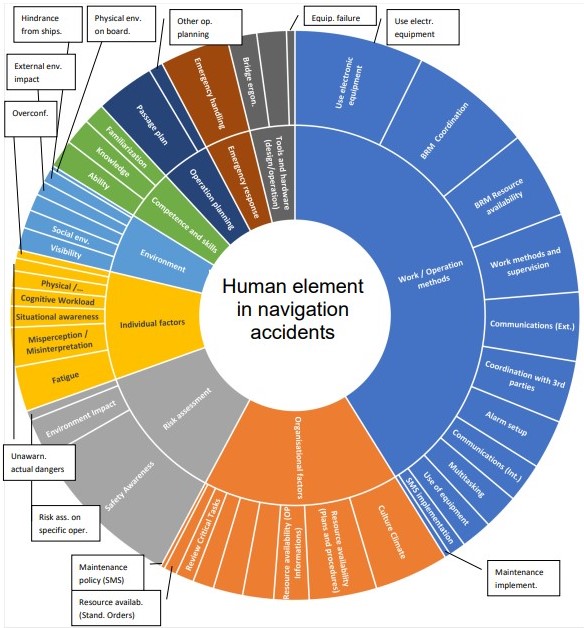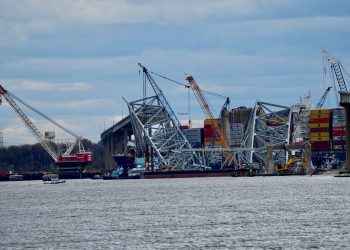EMSA published its safety analysis of EMCIP data, offering a high-level overview of the safety issues reported in the system between 2011 and 2021.
Main findings
The analysis identified nine safety issues. Each of them has been further examined into 45 sub-categories named “areas of concern”.
Following a further assessment based on frequency of reported contributing factors, the 5 most common safety issues related to navigation accidents are linked to:
- Work operation methods
- Organisational factors
- Risk assessment
- Environment
- Individual factors.
The analysis also considered the remedial actions suggested to prevent similar occurrences in future, either safety recommendations (SR) proposed by an Accident Investigative Body (AIB), or autonomously taken by the relevant parties.
AIBs issued most of their SR to the shipowners and companies (51.5%), mainly addressing operational procedures within the Safety Management System (SMS).
Other SR, addressed to the national authorities (around 22%), aimed at improving horizontal safety issues which appear common to the whole industry, thus requiring further discussions within international and EU frameworks.

Around 78% of the investigated navigation accidents is somehow linked to “human action”. The document goes beyond the face value of this figure and focuses on the complexity behind the human error, especially when the actions of the Master or OOW are scrutinised and demonstrates that the variability of the key actors’ performance is not the explanatory cause of the marine casualty.
Conversely, human action is a consequence of the complex, non-linear and dynamic socio-technical interactions between humans onboard, organisations ashore, policies, procedures and machines.
The outcome of the analysis also puts other important topics in the limelight which, given their significance and complexity, could be the starting point to a process of a more formal and detailed approach on each of the areas of concern in the appropriate instances, particularly addressing the following topics:
- Triggers of “human element” in navigation accidents
- Coordination of the bridge team, workload and resource availability
- Conflicts of shipborne technology
- Bridge ergonomics and equipment design
- Complexity of “procedures” in safety
Key causes
573 accident events have been directly associated to navigation accidents. Human action is, by far, the most reported category (447 events). Although “human action” scores around 78% of the overall reported accident event, its distribution is slightly different depending on the casualty event at stake.
- “Human action” counts 83.5% of the accident events reported for “collisions”, around 75% for “grounding” and around 71% for “contacts”.
- “Other agent or vessel” refers to events associated with e.g. weather conditions or interactions with other ships. In proportion, it appears more significant for “contacts” and “grounding” (around 15.7%) than collisions (11%).
- “System/ equipment failure” appears relevant for “contact” (12.4%) and less important for “collisions” and “grounding”.
Risk assessment
Safety and risk assessment, and reviews of tasks and procedures based on such assessment, are essential components of the safety culture and contribute to an effective decision-making process. Conversely, critical actions not preceded by at least a basic safety assessment may result in unexpected and unwanted events.
As it appears from the EMCIP data, issues linked to “Risk assessment” have been reported in 133 safety investigations, comprising 171 contributing factors.

Environment
The environmental factors, either internal or external the ship, may affect human performance and contribute to errors or variations from the normal working pathway. Such factors, reported in 139 contributing factors stemming from 102 investigations, mainly led to collisions and groundings. Differently from the issues concerning risk assessment, the areas of concern under this safety issues refer to the actual manifestation of environmental factors negatively impacting on the safe navigation.


































































